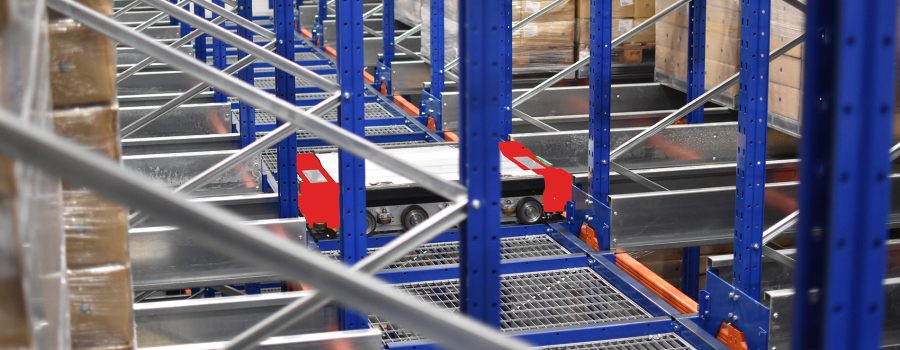
Warehouse automation was once seen as an ambitious, almost utopian concept. However, with advancements in technology, innovative solutions like Thistle Systems’ AUTOCUBE® are making automation more accessible than ever.
Businesses now have the opportunity to implement future-proofed systems that can transition from manual to semi-automated or fully automated operations, unlocking new efficiencies and competitive advantages.
We have identified key factors that indicate when a business should consider automation. If any of the following challenges resonate with your warehouse operations, it may be time to get in touch to explore an automated approach.
1. Workforce Challenges
Whether it’s rising labour costs, skills shortages, staff turnover or general productivity, managing workforce costs can often be a never-ending challenge for businesses and can curtail growth, throughput and the ability to maintain competitiveness in today’s environment. If you are looking to alleviate pressures in your warehouse caused by your workforce and create a warehouse operation which is reliable, predictable and scalable, you may want to consider the range of automated storage solution, whether it is automated pallet storage or robotic order picking and fulfilment.
2. The Need to Maximise Capacity and Improve Space Utilisation
Maximising storage space has never been more critical in reducing operating costs. Storing more in less space is a priority for many businesses, with Boards of Directors continuously seeking ways to enhance operational efficiency.
While traditional storage solutions like Drive-In Racking offer a high number of pallet positions, their practical utilisation often falls short—typically around 65%. Shuttle racking can improve storage capacity and efficiency compared to drive-in racking, but automation can take these benefits even further, optimising both space and cost-effectiveness.
3. The Demand for Faster Stock Throughput
Changing consumer behaviors—such as the rise of e-commerce and more fragmented distribution networks—are putting greater pressure on warehouses to operate with speed and accuracy.
Warehouses must ensure the right pallet reaches the right place at the right time to maintain efficiency. However, challenges such as inconsistent travel times, multiple handling of pallets, mixed pallet shipments, returns, and damaged goods can all slow down throughput. These inefficiencies are even more pronounced during staff shortages or disruptions like COVID-19, which significantly impacted warehouse movement and productivity.
Automation eliminates these uncertainties, reducing costs and dependency on external factors. Automated systems can even be pre-programmed to pick entire order sheets overnight, ensuring that goods are ready for dispatch as soon as the day shift begins.
4. Managing the Growth in SKUs
One of the biggest challenges many businesses face is the rapid increase in SKUs (Stock Keeping Units). With a growing number of products stored, warehouses must accommodate more pick faces while maintaining efficiency.
Many businesses find that 80% of their throughput comes from just 20% of their SKUs. This means warehouse designs must be tailored to reflect stock profiles, often requiring a mix of high-density storage solutions for fast-moving goods and carousels for slower-moving single items. Automation enables businesses to implement these solutions seamlessly, improving space utilisation and accessibility.
5. Reducing or Eliminating External Storage Costs
External storage is a common strategy for businesses managing fluctuating inventory levels. However, when external storage costs become a constant overhead rather than a short-term solution for seasonal demand spikes, it can erode profitability.
Some businesses outsource 100% of their storage needs for strategic reasons, but those using a hybrid approach—leveraging both in-house and external storage—can often achieve a rapid return on investment when automation is introduced. By optimising internal storage capacity, businesses can reduce or even eliminate the need for costly third-party warehousing
6. Gaining Greater Control Over Inventory
Warehouse Management Systems (WMS) provide valuable insights into stock levels, but the rise of e-commerce has created a need for even more precise inventory control. Knowing what is in stock—and exactly where it is located—has become essential for efficient picking and dispatch.
Automated solutions not only enhance security but also integrate seamlessly with WMS to provide real-time inventory tracking. Additionally, automation enables connectivity to the Internet of Things (IoT) and Big Data analytics, giving businesses greater visibility and control over multi-site operations
7. Prioritising Workplace Safety
Employee well-being is a top priority for any organisation, especially in warehouse environments where manual handling is a daily requirement. Repetitive lifting, picking, and pallet handling increase the risk of workplace injuries, leading to high absenteeism and staff turnover.
Industry research suggests that these roles will become increasingly difficult to fill, as younger generations tend to seek less physically demanding careers. Automation not only improves safety by reducing manual handling risks but also helps businesses address workforce challenges in a tightening labor market.
A Strategic Pathway to Automation
Thistle Systems’ pathway approach allows businesses to explore the potential of automation at their own pace. By assessing current warehouse challenges and developing a structured implementation plan, companies can unlock the benefits of automation while ensuring a smooth transition.
Find out more about Thistle Systems’ Automation Evolution Pathway or contact us now to discover how your business can take the next step toward a more efficient, automated future.
Call on 01236 453888 | Enquire Now
Looking to Automate your Picking Operations?
If Automation is right for you, however your requirements differ from AutoCube’s offerings, explore our options: Brightpick – A Robotic Order Picking System. From in-aisle robotic picking solutions to fully automated goods-to-person systems, we have a solution that can be tailored to suit your requirements.

